Author: Marshall Schott
Centennial is occasionally referred to as Super Cascade, as it is known to impart many similar characteristics with a touch more pungency. A solid majority of the annual Centennial yield is grown in the Pacific Northwest, but it doesn’t all come from the same farm, leaving it susceptible to variations caused by terroir, farming practices, and other seemingly minor differences. It’s for this reason breweries send teams out to participate in hop selection during harvest season, as it allows them to pick the best of the bunch before the various lots are blended and shipped out to others.
Consistently rated as being one of the best craft beers in America, Bell’s Two Hearted Ale is an orange-hued American IPA noted for being hopped entirely with Centennial, which contributes layers of orange and grapefruit zest with hints of apricot and pine. However, the Centennial Bell’s brews with are hand selected to ensure consistency and quality, which is important for such a lauded beer.
I was recently contacted by David Curtis, who manages the Bell’s General Store, a homebrew shop attached to Bell’s Brewery. David explained that as the biggest user of Centennial hops in the world. Bell’s gets first dibs on selection and naturally chooses what they believe to be the cream of the crop. As a fan of Brülosophy, he was curious to see how these Centennial Select hops compared to regular Centennial from the same crop year and offered to send me a couple kits. As a fan of Two Hearted, I obliged.
| PURPOSE |
To evaluate the differences between an IPA hopped entirely with Bell’s Centennial Select and the same IPA hopped entirely with standard Centennial.
| METHODS |
Two Hearted Ale is a classic American IPA that some might sways “Midwest” given its orange-ish tint from the dose of Crystal malt.
Bell’s Two Hearted Ale
Recipe Details
| Batch Size | Boil Time | IBU | SRM | Est. OG | Est. FG | ABV |
|---|---|---|---|---|---|---|
| 5.2 gal | 75 min | 64.3 IBUs | 7.0 SRM | 1.065 | 1.013 | 6.9 % |
| Actuals | 1.065 | 1.01 | 7.3 % | |||
Fermentables
| Name | Amount | % |
|---|---|---|
| Pale 2-Row Malt | 10 lbs | 74.07 |
| Pale Ale Malt | 3 lbs | 22.22 |
| Caramel Malt - 40L | 8 oz | 3.7 |
Hops
| Name | Amount | Time | Use | Form | Alpha % |
|---|---|---|---|---|---|
| Centennial | 35 g | 45 min | Boil | Pellet | 9 |
| Centennial | 35 g | 30 min | Boil | Pellet | 9 |
| Centennial | 100 g | 5 days | Dry Hop | Pellet | 9 |
Yeast
| Name | Lab | Attenuation | Temperature |
|---|---|---|---|
| Flagship (A07) | Imperial Yeast | 75% | 60°F - 72°F |
Notes
| Water Profile: Ca 130 | Mg 1 | Na 43 | SO4 209 | Cl 75 |
Download
| Download this recipe's BeerXML file |
The week before brewing, I received a the kits David sent from Bell’s General Store, one with Centennial Select and the other with standard Centennial, both of which were stored in the freezer until use.
I started by brew day by collecting two identical volumes of filtered water and adjusting them to match the profile David shared with me.
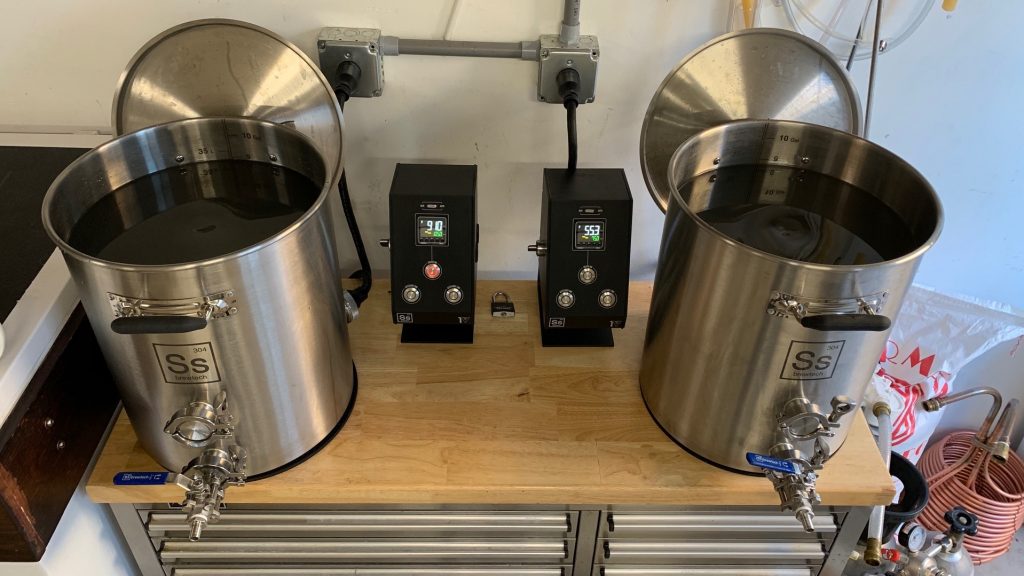
I milled both sets of grain into separate fabric filters while the water was heating up then moved on to preparing the kettle hop additions.
Once strike temperature was reached on each batch, I mashed in, gave a gentle stir with my giant whisk, then checked to make sure both achieved the same target mash temperature.
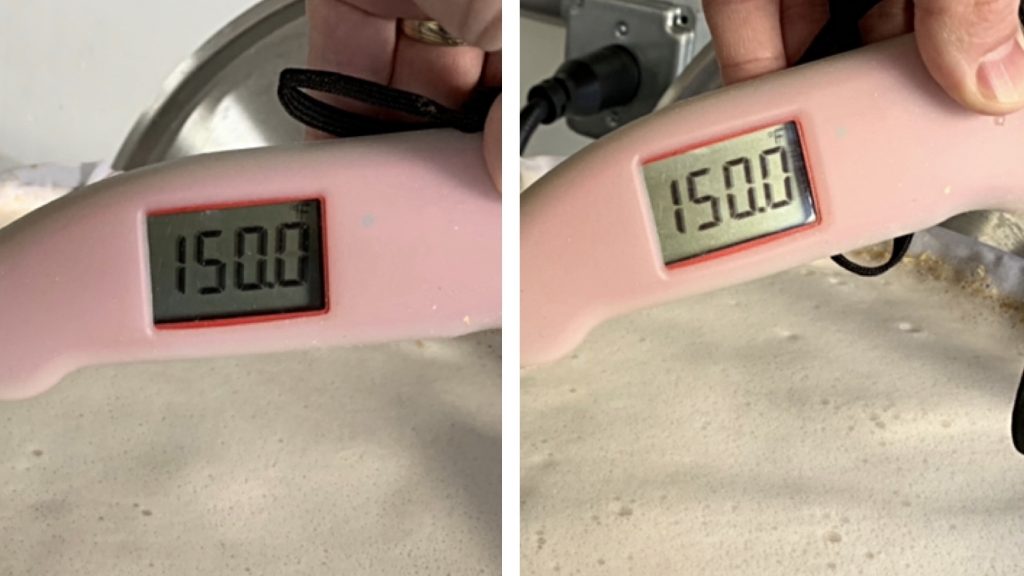
Each mash was left to rest for 60 minutes.
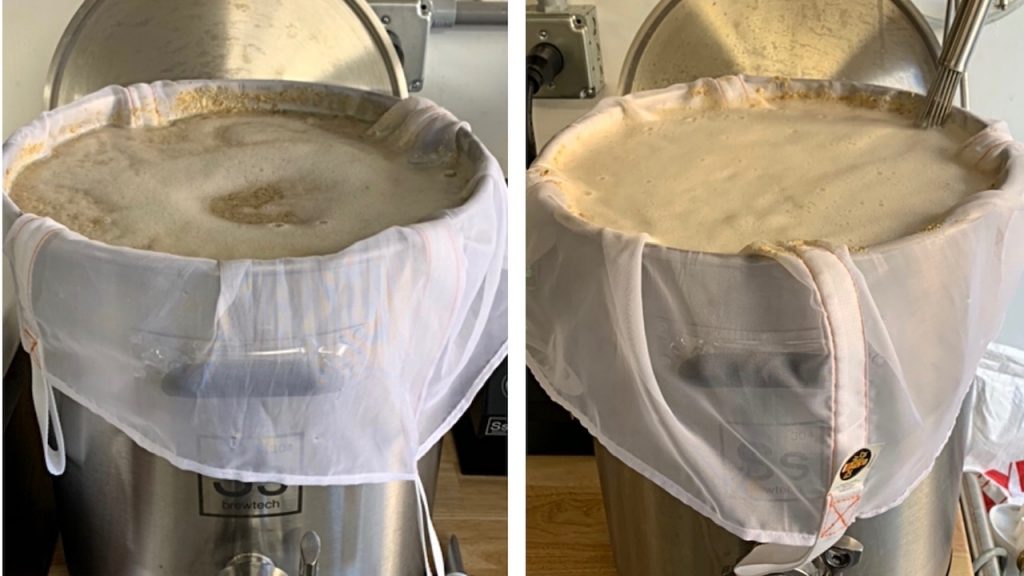
At the end of either mash step, the grains were removed and the worts were brought to a boil that lasted 75 minutes per instructions.
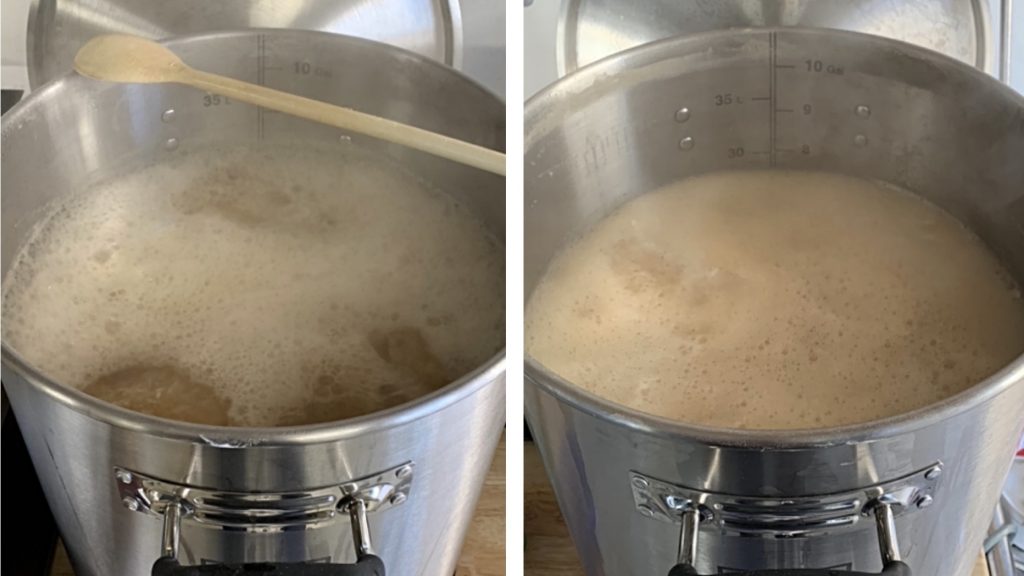
When the boils were complete, the worts were quickly chilled to 66°F/19°C thanks to my cool winter groundwater.
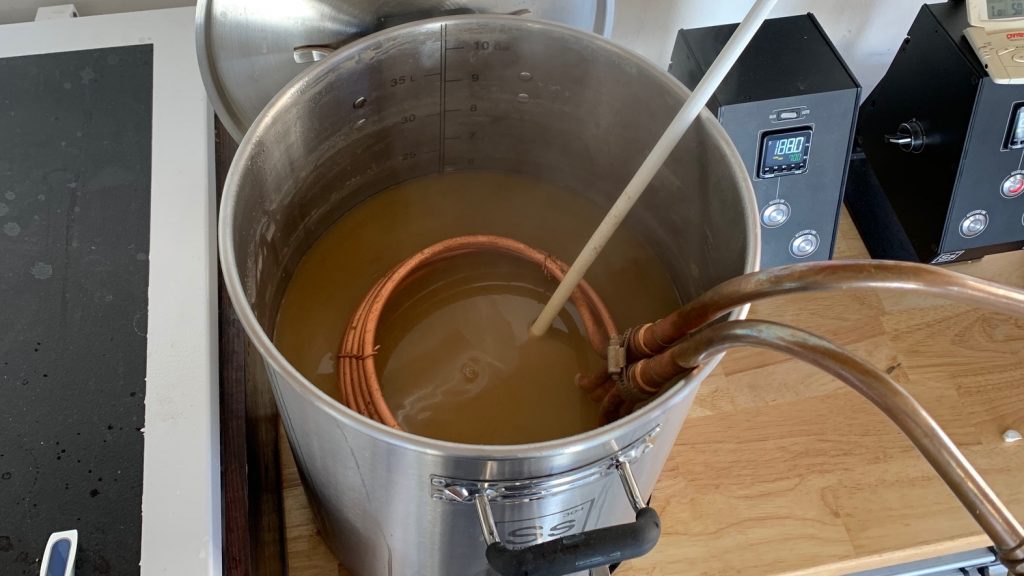
Refractometer readings revealed both batches achieved the same OG.
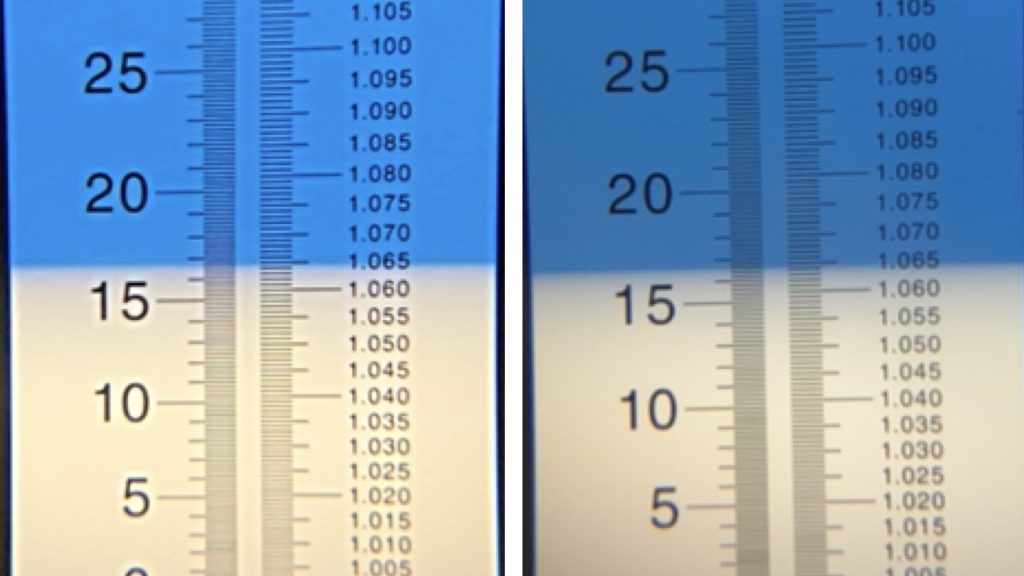
The worts were allowed to settle for 10 minutes before being transferred to sanitized Brew Buckets.
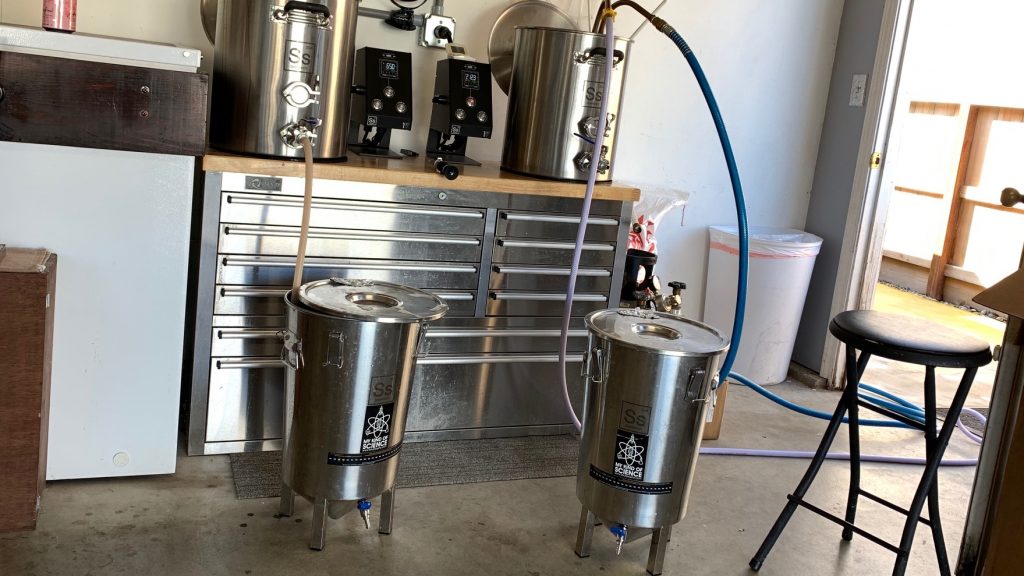
I placed the filled fermentors next to each other in my fermentation chamber controlled to 66°F/19°C then used some remnant wort to make vitality starters with Imperial Yeast A07 Flagship.
The yeast was pitched 4 hours later and signs of fermentation were visible later that evening. In an effort to reduce the risk of oxidation, I added the dry hop additions 32 hours after pitching the yeast.
With signs of fermentation all but absent after 9 days, I took hydrometer measurements confirming FG had been reached in both beers.
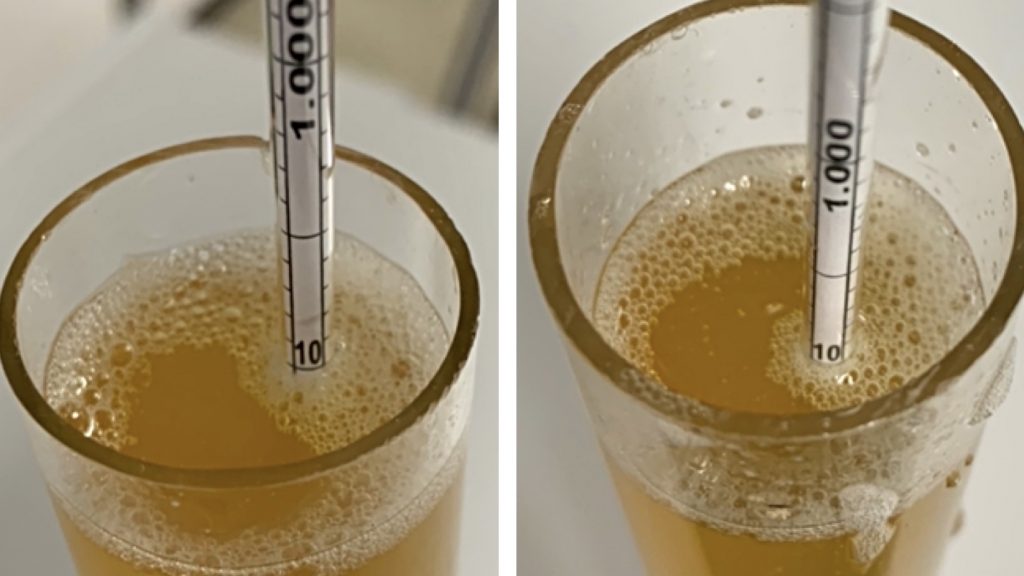
At this point, I swapped the airlocks out for CO2 filled BrüLoonLocks then reduced the temperature of the chamber.
After 2 days at 34°F/1°C, I transferred the beers into CO2 purged kegs.
The filled kegs were placed in my keezer and burst carbonated overnight before I reduced the gas to serving pressure. After a week of conditioning, they were both nicely carbonated and ready to serve.
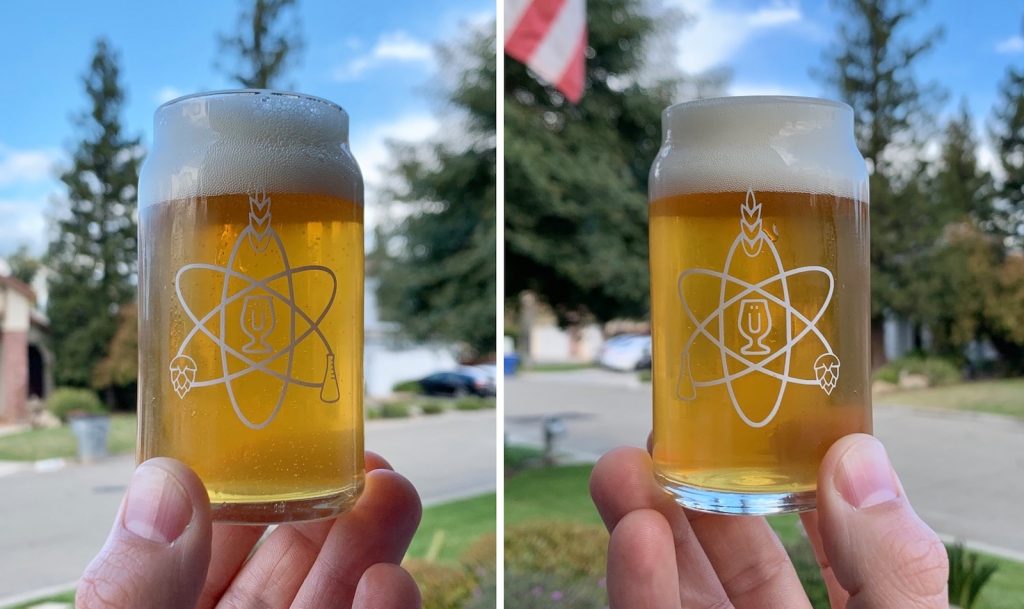
| RESULTS |
A total of 20 people of varying levels of experience participated in this xBmt. Each participant was served 1 sample of the beer made with Bell’s Centennial Select and 2 samples of the beer made with standard Centennial hops in different colored opaque cups then asked to identify the unique sample. A total of 11 tasters (p<0.05) would have had to accurately identify the unique sample in order to reach statistical significance, though only 5 did (p=0.85), indicating participants in this xBmt were unable to reliably distinguish a Bell’s Two Hearted Ale clone hopped with Centennial Select from one made with standard Centennial hops.
My Impressions: Out of the 5 triangle tests I attempted, I selected the unique sample just once, and I’ll admit it was a pure guess. To my palate, both beers tasted identical, even when comparing them side-by-side. The Centennial character was strong in both and melded well with the classic IPA grist. An easy-drinker, to be sure!
| DISCUSSION |
According to Wikipedia, terroir is defined as “the set of all environmental factors that affect a crop’s phenotype, including unique environment contexts, farming practices, and a crop’s specific growth habitat.” In regards to hops, many believe terroir has a qualitative impact on quality, not necessarily that certain growing conditions are good or bad, but that hops of the same variety grown in different soil by different farmers using different processes can end up being different, at least to some degree. One way the industry gets around this is by blending hops from various lots to create a more homogenized finished product that’s also a bit more consistent, assuming any terroir differences weren’t terribly vast.
For the more discerning craft brewer or homebrewer who happens to be friends with hop growers, there’s hop selection, a fun process that allows one to hand select hops from specific lots prior to blending. Again, this isn’t really a better/worse scenario, but rather a way for those who are able call first dibs on the hops they subjectively perceive as having more of the character they’re looking for. This is exactly what Bell’s Brewery does with their Centennial Select, which is hand selected for use in Two Hearted Ale and other beers. Curiously, tasters in this xBmt were unable to reliably tell apart versions of Two Hearted Ale made with either Centennial Select or standard Centennial hops.
Having had the incredible experience of not only hanging out in Yakima during hop harvest, but participating in both mock and actual hop selection, I’m comfortable claiming that hops from various lots can definitely be different. However, this difference isn’t always huge and can shift on an annual basis, which leads to me wonder if the lack of a perceptible difference in this xBmt had mostly to do with the possibility the 2018 Centennial was just more consistent than in the past. I really don’t know, and while both beers in this xBmt were quite tasty, if I’m a craft brewer with the means and sensory proficiency, I’m definitely down to hand select what goes in my beer.
If you have any thoughts about this xBmt, please do not hesitate to share in the comments section below!
Support Brülosophy In Style!
All designs are available in various colors and sizes on Amazon!
Follow Brülosophy on:
FACEBOOK | TWITTER | INSTAGRAM
If you enjoy this stuff and feel compelled to support Brulosophy.com, please check out the Support page for details on how you can very easily do so. Thanks!

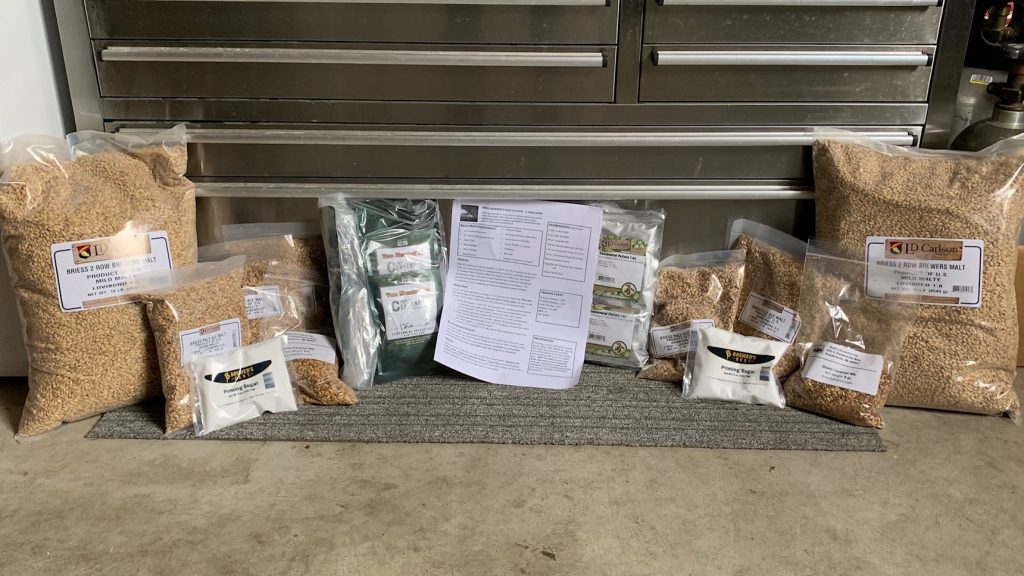
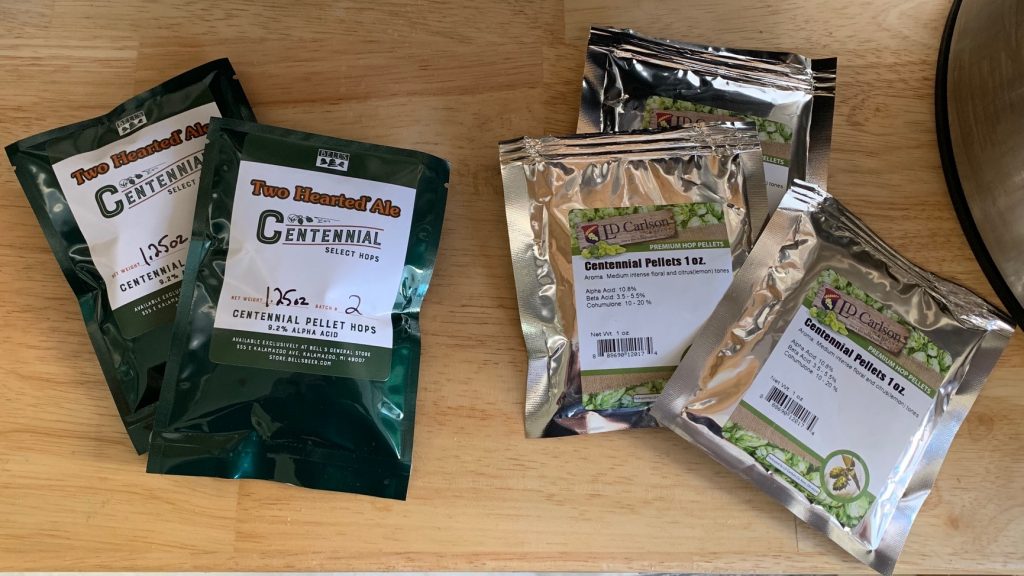
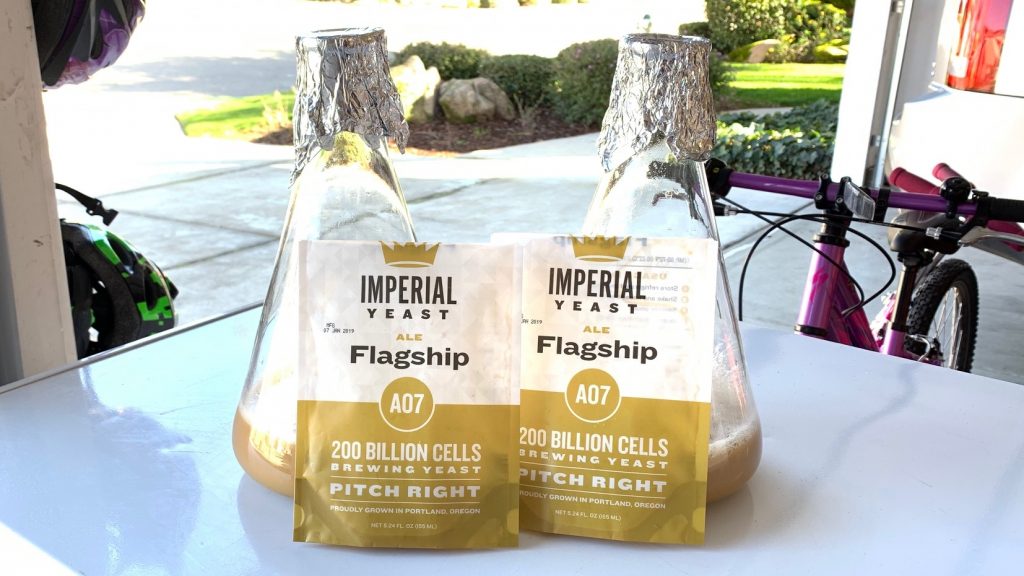
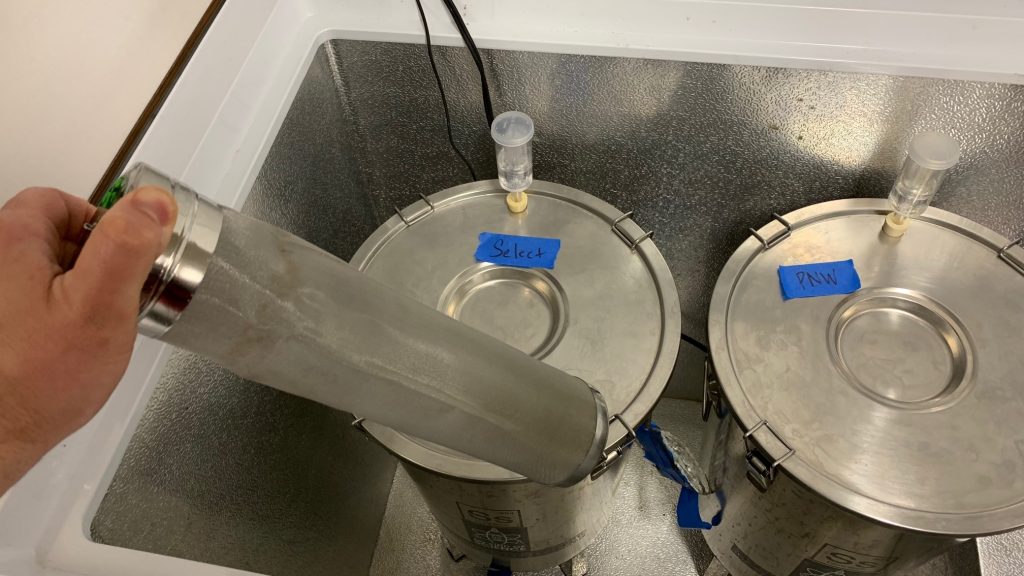
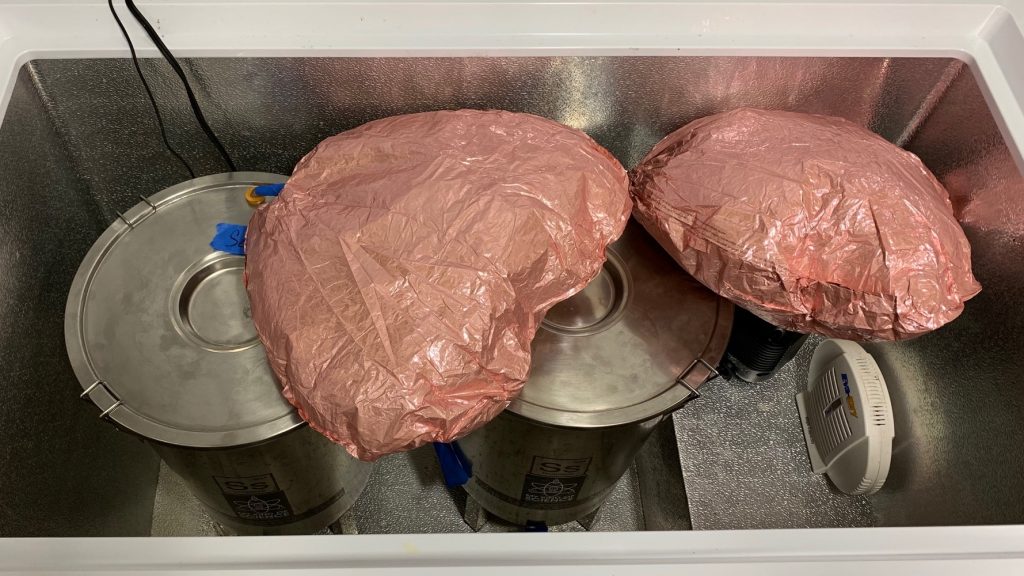
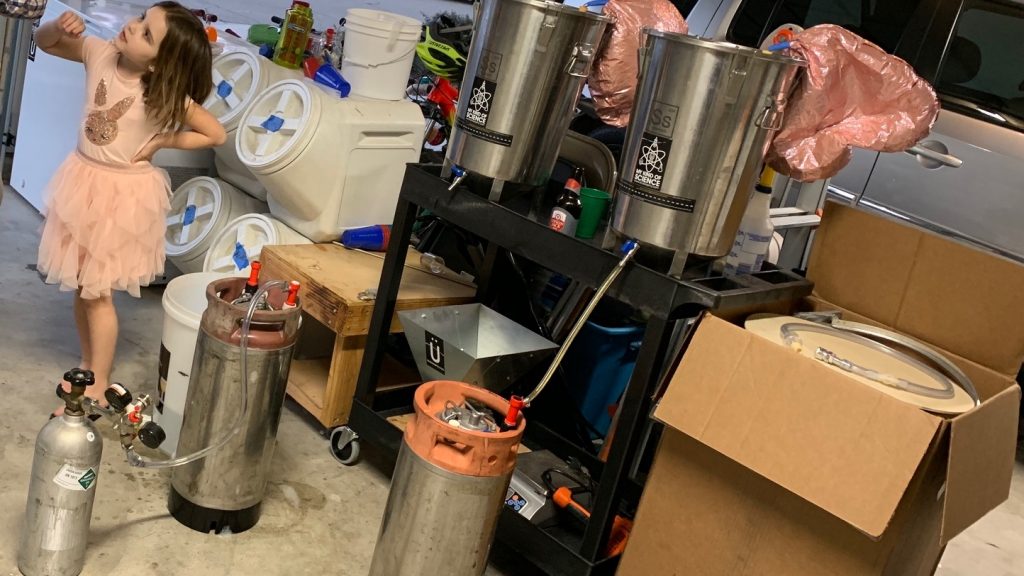










23 thoughts on “exBEERiment | Hop Comparison: Bell’s Brewery Centennial Select vs. Standard Centennial In An American IPA”
Great article Marshall. I live close enough to Bell’s that I get to go a handful of times per year. Great place! So…. how close was your beer to the original overall?
Still trying to decide… statistically 🙂
What size dry hop screen do you use in the Brew bucket? I see the amt is a little under 4oz. Do you just drop it in, or is it tied somewhere? I just got a brew bucket myself, and I’m curious what others do.
Thanks for the great exbeeriment.
I believe strongly that blended, group lots of hops will always generally be able to reach or surpass the quality level of a single, selected lot. Just like you can get more out of blending multiple beers together than just one beer. Though, of course I am a bit biased, but I’m happy to see my blended lot showed it’s worth in this experiment. Cheers!
I brew an IPA with PNW centennial. For Christmas I decided to brew with some Atlantic Northeast hops (Maine) and found the flavor remarkably different. Much more subtle grape and pear rather than the mango, rose, and citrus I get with the PNW hops.
This applies to east coast Columbus as well – the experience was similar.
Oh, I just went back to try and find the lot number on those LD Carlson pellets and realized they weren’t in YCH packaging, so those must be Centennial they received from some other supplier, so not my work. Interesting.
I love me some Centennial. Two-Hearted was one of the first IPAs I latched onto, and Founder’s Centennial IPA is another good one. Not sure if that one is 100% Centennial, though.
I noticed that James from Basic Brewing Radio was also given the opportunity to evaluate the select hops.
They performed a non-blind, side-by-side experiment, and felt they were able to note some differences. Of course, we know that these methods are very susceptible to bias, so I took the results with a grain of salt, wondering if I would be able to tell the difference, blind or not.
I enjoyed James’ commentary as always, though.
I always love it when more than one of my ‘homebrew heroes’ tackle the same variable in a different way.
Did you make any adjustments for the difference in AA%? I noticed your recipe shows weights, but were they adjusted for IBU contribution since the select was a full point and a half lower?
They were close enough that no adjustments were made. And the fact people couldn’t distinguish them says the bitterness was likely similar enough…
Did you try either of them next to a commercial Two Hearted?
yeah, did they taste like two hearted much or no? what brand of pale malt and pale ale malt did you use?
Picture looks like Briess.
I don’t know about terroir, but I suspect climate has a big impact on hop character. I grow Cascade in my garden in London, UK, and it has absolutely no grapefruit/melon character whatsoever. What I do get is earthy onion and garlic flavours. UK hops in general seem never to develop the bright citrus flavours that are common in hops from the Pacific NW or New Zealand. So I think you need not just terroir and the right genetics but plenty of rain in the growing season and lots of hot sun as the cones ripen. We get the rain the UK not not as much sun..
Definition of terroir:
“the complete natural environment in which a particular wine is produced, including factors such as the soil, topography, and climate”
Not a good definition. Terroir is much more granular than climate on a continental scale. It varies from one vineyard to another (in the same region) or even from one part of a vineyard to another part – maybe a north facing slope produces different wine from a south facing slope, or a well drained soil is different from a heavier soil. You could call that microclimate, but it’s not climate in a macro sense. The difference between UK hops and American hops isn’t a matter of terroir.
Garlic and onion flavors tend to develop late in the life cycle of hop cones. It is possible you are harvesting your hops too late, why don’t you to harvest them earlier. and see if it makes a difference.
I have tried that, but I still don’t get the Cascade flavour.
The climate in London is very similar to the Pacific Northwest, at least west of the Cascades where I grow hops. With proper nutrition you should do much better than onion and garlic I would think .
What’s your latitude? London is 52 degrees north, so by late summer/early autumn when the cones are ripening, the sun is pretty anaemic. I suspect you’re significantly further south.
I got one of the Bell’s centennial packs. I did think the aroma in the Bell’s pack aroma was extra good compared to the other one I had… maybe analogous to high end coffee beans vs standard grocery store coffee.
Marshall. How close was your final beer to the original Two Hearted?
I assume that Bell’s didn’t always get first choice; early on they would’ve gotten the same blend everyone gets. So the hops they used were a sort of statistical mean of all centennials. If they’re still trying to match the original beer, then they would use hops that most closely match the average centennial, rather than centennials that express their terroir.
If I had to guess I bet Centennial Select is just Michigan Centennial from Mi Local hops